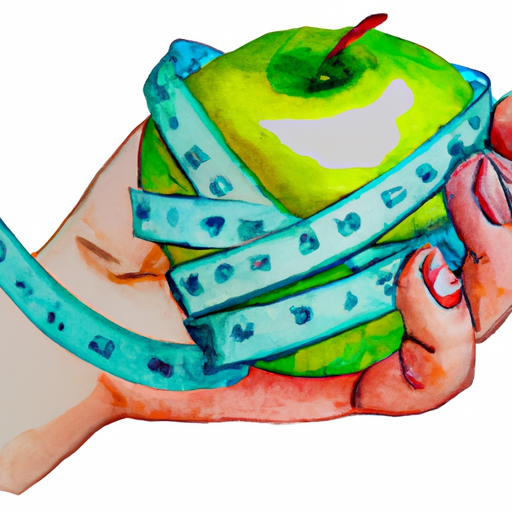Prediabetes is a condition that often goes unnoticed, yet it affects millions of people worldwide. It is a warning sign that blood sugar levels are higher than normal, but not high enough to be classified as diabetes. In this article, we will delve into the various aspects of prediabetes, including its diagnosis, symptoms, and causes. We will also explore the treatment options and lifestyle changes that can help manage this condition. Additionally, we will provide valuable tips for preventing prediabetes and maintaining a healthy lifestyle for long-term well-being. Whether you have been recently diagnosed with prediabetes or simply want to learn more about this condition, this article will serve as a comprehensive guide to understanding, managing, and preventing prediabetes.
1. Understanding Prediabetes: Diagnosis, Symptoms, and Causes
Prediabetes is a condition that occurs when blood glucose levels are higher than normal but not yet high enough to be diagnosed as type 2 diabetes. It is often considered a warning sign that indicates an increased risk of developing diabetes in the future. Understanding prediabetes, including its diagnosis, symptoms, and causes, is crucial in order to prevent the progression of the condition to full-blown diabetes.
Diagnosing prediabetes typically involves a blood test that measures the fasting plasma glucose (FPG) level. A person is considered to have prediabetes if their FPG level falls between 100 and 125 milligrams per deciliter (mg/dL). Another test called the oral glucose tolerance test (OGTT) may be used, where blood glucose levels are measured after consuming a sugary drink. A result between 140 and 199 mg/dL indicates prediabetes. Additionally, the hemoglobin A1C test can be used, with a result between 5.7% and 6.4% indicating prediabetes.
Symptoms of prediabetes are often absent or subtle, which is why the condition can go undiagnosed for a long time. However, some individuals may experience increased thirst, frequent urination, fatigue, blurred vision, or slow wound healing. It is important to note that these symptoms can also be attributed to other health conditions, so a proper diagnosis is essential.
The causes of pred
2. Managing Prediabetes: Treatment Options and Lifestyle Changes
Managing Prediabetes: Treatment Options and Lifestyle Changes
Once diagnosed with prediabetes, it is crucial to take immediate action to prevent the progression to type 2 diabetes. The good news is that prediabetes can often be reversed or delayed through a combination of treatment options and lifestyle changes. By adopting a proactive approach, individuals with prediabetes can significantly lower their blood glucose levels and reduce their risk of developing type 2 diabetes.
1. Medication Options:
In certain cases, healthcare professionals may prescribe medication to help manage prediabetes. These medications aim to control blood sugar levels and improve insulin sensitivity. Commonly used medications include metformin, which reduces the amount of glucose produced by the liver, and alpha-glucosidase inhibitors, which help slow down the digestion of carbohydrates. It is important to note that medication alone is not sufficient to treat prediabetes. It should be used as an adjunct to lifestyle modifications.
2. Lifestyle Changes:
Lifestyle modifications are the cornerstone of prediabetes management. By making healthy choices and incorporating positive habits, individuals can mitigate the risk of developing type 2 diabetes. Here are some key lifestyle changes that have been proven effective:
a) Diet: A balanced and nutritious diet is essential in managing prediabetes. Focus on consuming whole foods, such as fruits, vegetables, lean proteins, and whole grains. Avoid sugary and processed foods, and limit the intake of carbohydrates. A registered diet
3. Preventing Prediabetes: Tips for a Healthy Lifestyle and Long-term Well-being
Maintaining a healthy lifestyle is crucial for preventing prediabetes and ensuring long-term well-being. By adopting certain habits and making positive changes, individuals can significantly reduce their risk of developing prediabetes and its associated complications. Here are some tips for a healthy lifestyle that can help prevent prediabetes:
1. Healthy Eating: A well-balanced diet is the foundation of a healthy lifestyle. Opt for a variety of nutrient-rich foods, including whole grains, fruits, vegetables, lean proteins, and low-fat dairy products. Avoid processed foods, sugary snacks, and beverages as they can contribute to weight gain and increase the risk of developing prediabetes. Incorporate portion control and mindful eating practices to maintain a healthy weight.
2. Regular Physical Activity: Regular exercise not only helps in weight management but also improves insulin sensitivity, lowering the risk of prediabetes. Aim for at least 150 minutes of moderate-intensity aerobic activity or 75 minutes of vigorous-intensity aerobic activity each week. Additionally, include strength training exercises at least twice a week to build muscle mass and enhance overall health.
3. Weight Management: Maintaining a healthy weight is crucial in preventing prediabetes. Excess body weight, especially around the waistline, increases the risk of insulin resistance. If overweight or obese, strive for gradual weight loss by incorporating healthy eating habits and regular physical activity. Consult a healthcare professional for personalized guidance and support in achieving weight loss goals.
4.

